We visited to particularly magnificent churches in downtown Melbourne. The first was St. Paul’s Cathedral, a large Anglican cathedral with a classic rough-stone exterior that is a smart juxtaposition with the very avant-garde construction of Melbourne film institute centre immediately across the street. Our excursion into St. Paul’s was made doubly nice by the symphony orchestra playing in the nave. They were warming up for a free Beethoven concert that was being given that afternoon.
The features of St. Paul were in a very typical grand Anglican style. Lots of stained glass windows, a beautiful choir screen that featured twelve medieval English kings, and lovely tile designs on the floor. There were some geckos (or lizards of some description) winding themselves around pillars, which we liked in particular. The pictures are far too dark to warrant putting them up in this post, but I trust you to believe that they were darling.
The batteries in the camera were dying, so the shutter speed on the camera was really low, and most of the pictures turned out blurry or dark. One of the few pictures of St. Paul that turned out was of this series of arches, which was part of the front entry:
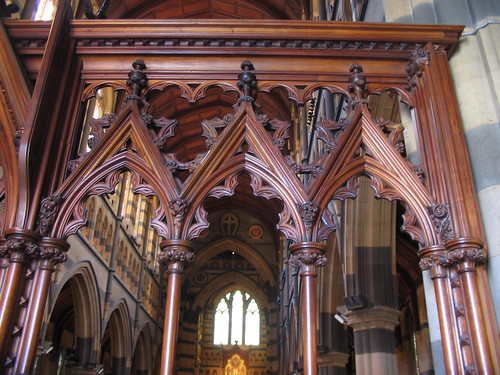
There was also a very interesting feature on the walls behind the altar. I’ve seen many upright pentacles in church designs, but never before have I seen inverted pentacles. The picture is blurry, but you can still make them out. They are in the circles at the top of the lower archways:
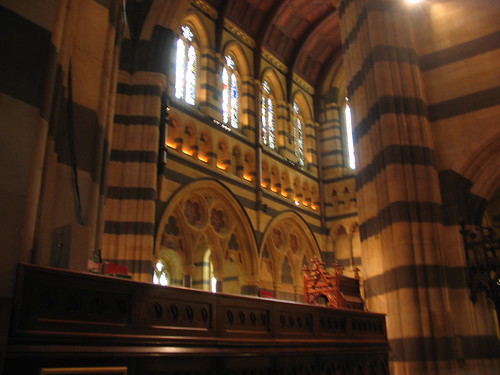
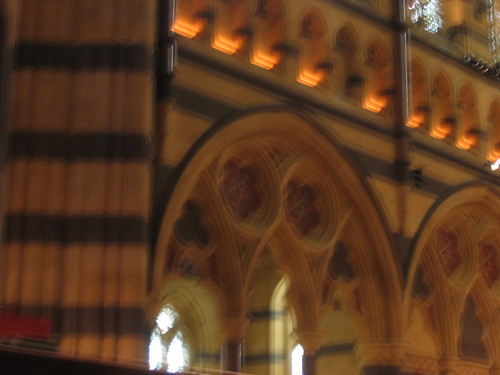
We also paid a visit to St. Patrick’s Cathedral, a massive Catholic cathedral that would qualify as the granddaddy of all churches in Melbourne. You can see the church spires leaping up from behind the government buildings almost anywhere in the downtown area. It is beautiful, and reminded me of the grander cathedrals I saw on a short school trip to Quebec.
The grounds of St. Patrick are gorgeous, and one of the side entryways features an extremely long sloped path, down the centre of which runs a waterfall feature during the summer months. It wasn’t turned on when we visited, but I imagine that it is very pretty.
There was enough sculptural features covering the exterior to make one’s head spin, and the interior of the church was equally breathtaking. Glen had a fit and took over seventy photographs, only a couple of which I’ll post here. The grounds had splendid statues of St Francis of Assisi and St. Catherine of Sienna, as well of a couple prominent Melbourne figures.

There were a great number of windows, and around each window were decorative heads. Each head had obviously different features, no two were alike; I’d love to be able to find out who these people were, because I am certain that each one represented a very specific person. There were more heads gargoyles decorating the spires and the drainpipes, or clinging to various architectural precipices.

Looking straight up at the cathedral from the front gave both Glen and I a huge slap of vertigo, which is understandable considering the scale of this Goliath-like structure. I’m not too sure just how many spires there are around the front and rear of the buildings, and the sides of the cathedral are supported by fantastic flying buttresses – all as heavily detailed as anything else on or in the building.
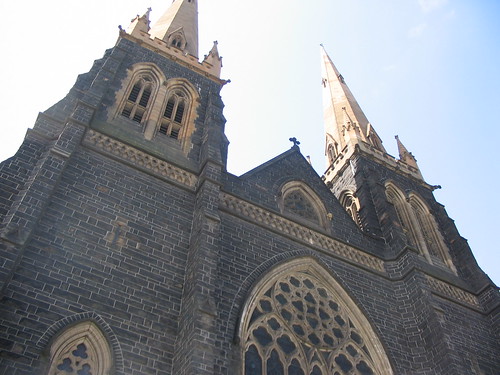
To give you some idea of the vastness of the construction, we took a photo of the model of the cathedral. This shows the detail around the rear of the building, including some of the flying buttresses and a dense forest of spires.
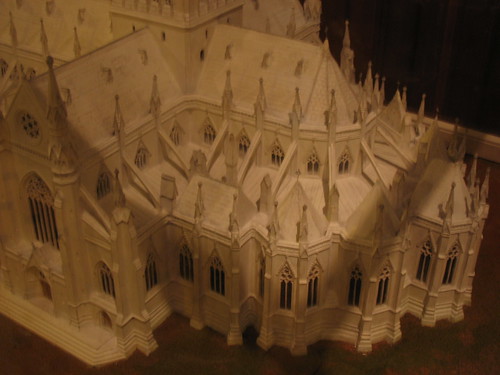
It really would be impossible to go into detail about the degree of decoration around every single window, cornerblock, or archway. Vines and faces and florets and foils were everywhere. Moving into the cathedral was equally dramatic. Every window is stained, and if it isn’t stained with images and art, then it is stained an amber colour. At that time of day, slightly before noon, the sun was slanting in through the amber windows, which literally bathed the entire cathedral in a gold glow. It is like stepping into the inside of a piece of amber.
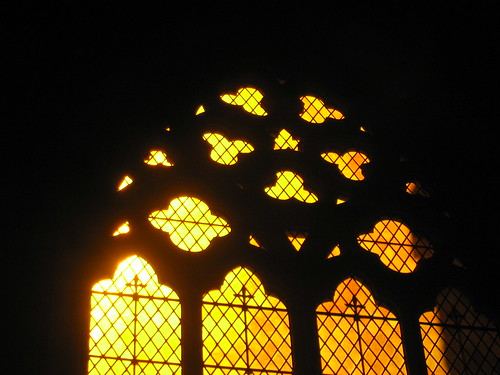
As one would expect in any major cathedral, artwork was everywhere. The organ pipes themselves were something to wonder at, and took up the entire rear of one of the side apses.
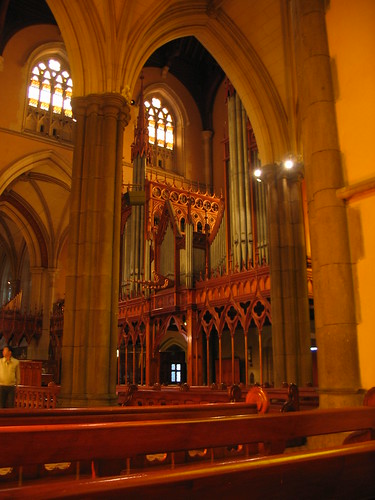
Around the rear of the sanctuary were are series of niches, each with it’s own unique dedicated altar and heavily decorated glass windows. We spent a great deal of time attempting to decipher the symbols that littered the area; each niche had a specific story that revolved around a specific religious figure, and while we couldn’t figure them all out we were able to get the gist of most of them. It was a great deal of fun. Adding to that are the accessible records of the building of the cathedral. Nearly every pillar has a brass plate on it stating who ‘built’ (read: paid for) that particular pillar. There are dedication plaques everywhere, and a detailed account of one parishioner who died in 1900 and left 50,000 pounds in his will for the completion and decoration of the cathedral. There is as much history lesson as religious experience available in that place, and you need to take your time to go do it any justice.
There is art up, there is art down, there is art on each floor stone and ceiling mosaic tile. There is a huge rose window at the front and massive glass triptychs at the back. It is a staggering place, defiantly worth the time spent there.
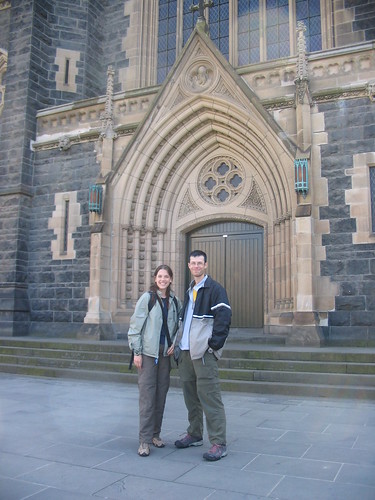
No comments:
Post a Comment